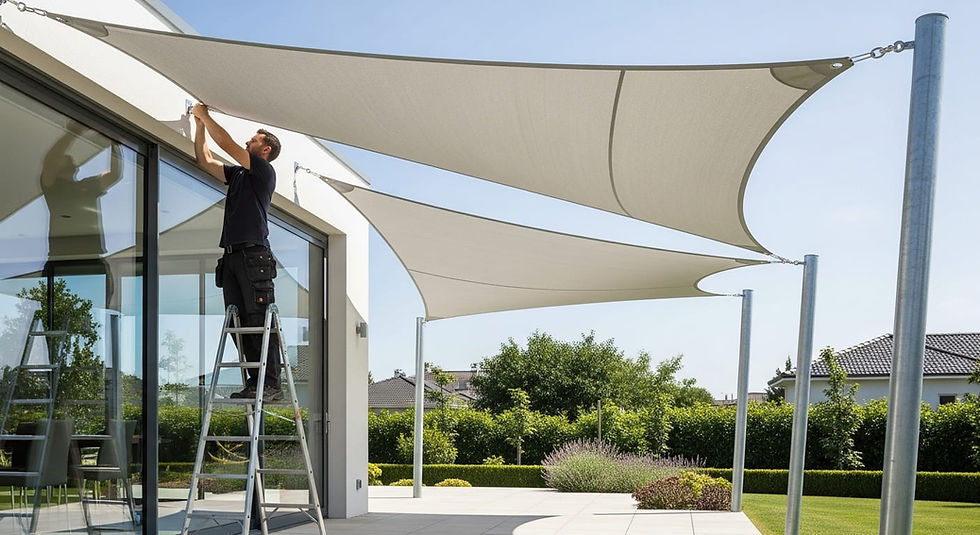Your Guide to the Preventive Care and Repairs for Maintaining Durability of Concrete Slabs
- ameliya lanne
- Oct 31, 2023
- 4 min read
Updated: Jun 12
Have you ever stepped onto a beautifully smooth concrete slab, marvelled at its solid strength, and wondered what keeps it so durable over decades
? Or perhaps you've noticed a crack or two in your own concrete spaces and are now concerned about the health of your property. These seemingly indestructible surfaces can, over time, start to deteriorate if not properly cared for.
This is where The Design Files steps in to help! We have put together an incredibly detailed guide on the preventive care and repairs for your concrete slabs. We delve into the nitty-gritty of concrete care, unravelling the secrets to preserving the robust nature of this prevalent structural material. We will answer all your wh-questions as we explore what maintenance concrete demands, why it is crucial, and who can benefit from this knowledge.
In today's comprehensive guide, we will approach the subject from all angles, covering everything from simple preventive methods to complex repair techniques and their pros and cons. So, I invite you to scroll on, let your inner DIY enthusiast out, and learn how to master one of the foundational elements of modern architecture.

Why is Concrete Maintenance Essential?
Understanding why concrete upkeep is essential requires a basic grasp of its composition. Concrete, while exceptionally durable, is not completely invincible. Environmental factors such as water infiltration and freeze-thaw cycles can degrade concrete over time, resulting in unsightly cracks or flakiness.
These surface defects can then invite further deterioration by allowing water and chemicals to penetrate deeper into the slab, compromising its structural integrity. Regular preventive care, therefore, is a must to retain the visual appeal and avoid premature wear and tear.
Crucially, maintenance can also extend the life of your slab, saving you from early replacement costs. Remember, the ounces of prevention today can save you pounds of cures down the line!
What Preventive Care Does Concrete Need?
The key to successful preventive care lies in regular surface cleaning and applying a quality sealer. Regular cleaning not only keeps your slabs looking spick and span but also helps identify any emerging flaws early. Employing a stiff-bristle broom and a mild detergent solution should suffice for most domestic slabs.
Sealing is an equally vital step to protect against water absorption, oil and chemical stains, wear and tear, and colour fading. Choose a sealer based on your specific requirements and the environmental conditions your slab is exposed to. If you are unsure, it's always a wise decision to seek professional advice.
When Should I Perform Concrete Repairs?
Performing repairs at the right time is as important as the repair method itself. Ideally, damages should be addressed as soon as they are identified. Small, superficial cracks can transform into large fissures or even potholes if allowed to worsen over time.
Initiating repairs early, while the damage is still minimal, reduces the complexity of the task and makes the process less time-consuming and expensive. So, when you spot that tiny crack or minor spalling, don't ignore it! Nip it in the bud and keep your slab in the best shape.
How to Perform Concrete Slab Repairs?
The method of repair depends on the severity and type of damage. Smaller, superficial cracks can be efficiently handled by applying a concrete patch. This is a straightforward DIY task requiring a few tools and materials.
However, in the case of wider cracks or severe spalling, professional intervention may be needed. The method used in these cases often involves removing the damaged areas and applying high-quality repair mortar. This process, while more complex, ensures a longer-lasting repair and restoration of the slab’s structural integrity.
Pros and Cons of Concrete Slab Maintenance
Maintaining concrete slabs has its pros. It enhances appearance, extends lifespan, reduces replacement costs, and preserves structural integrity. The sense of satisfaction derived from successful DIY repairs can be quite rewarding as well.
On the downside, regular maintenance can be time-consuming and may require certain skills and knowledge, particularly for complex repairs. Also, the cost of high-quality sealers and repair materials can add up over time. Despite these cons, the positive aspects vastly outweigh the negatives.
Whom Can This Guide Benefit?
Whether you are a homeowner with a concrete driveway, a small business owner operating in a concrete premises, or simply someone interested in DIY projects, this guide will be extremely beneficial. Equipped with the knowledge in this guide, you would be in a better position to diagnose and address the minor issues, saving you from seeking professional help every time.
Conclusion
Preservation of concrete slabs is no small feat. It encompasses understanding why and what maintenance requirements exist, when and how to perform necessary repairs, weighing the pros and cons, and finally implementing all these practices. It might seem daunting at first, but armed with this detailed guide, embarking on this journey becomes less intimidating.
Good maintenance practices not only save you from costly early replacements but also enhance the aesthetic value of your property. So, in the end, every ounce of effort you put into concrete care is an investment into the durability and beauty of your spaces. Now that you are no longer a novice in concrete slab preservation, let the journey of planning, preventive care, and repairs begin!



















Comments